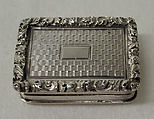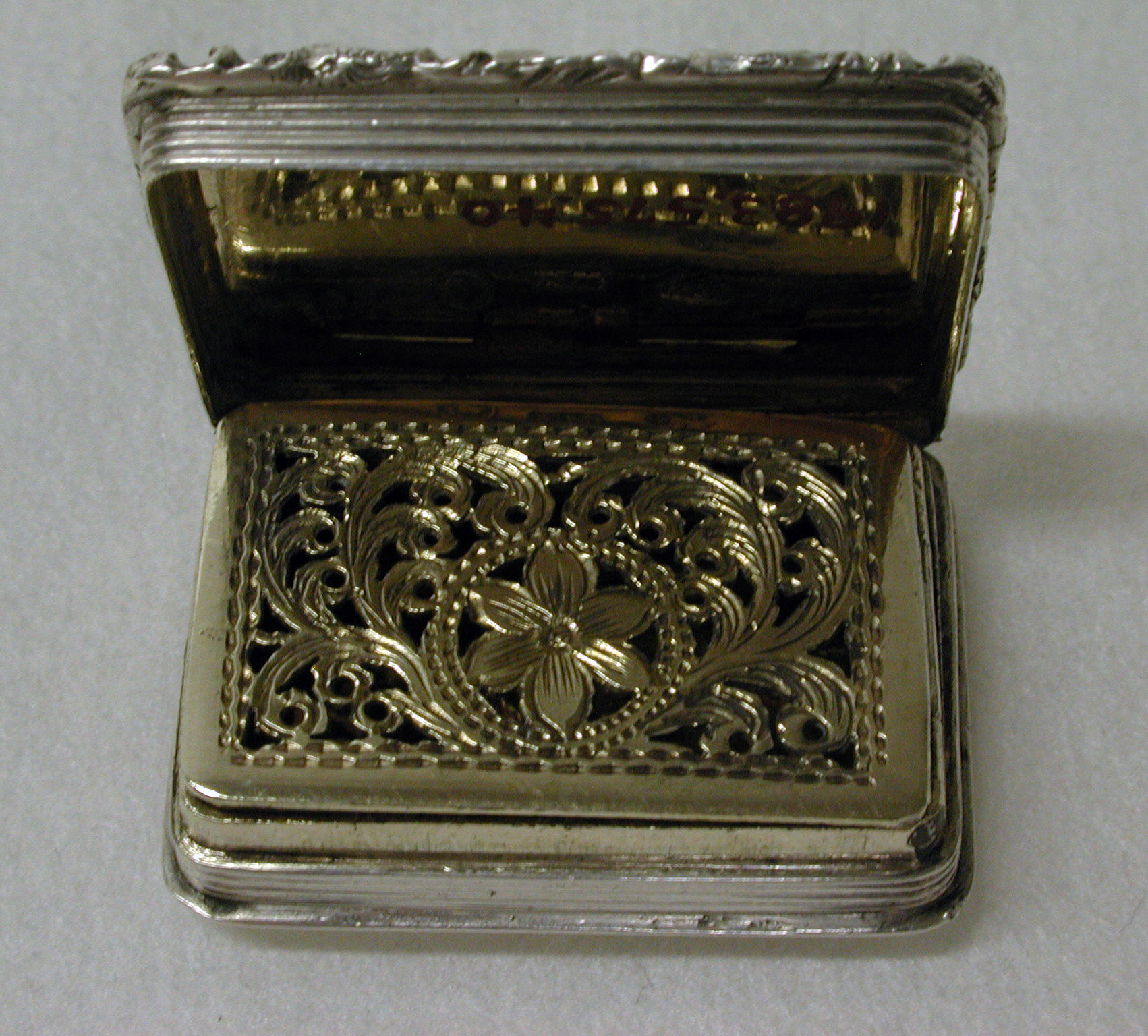Vinaigrette
Nathaniel Mills British
Not on view
The name of Nathaniel Mills (1746–1843) and profession as "jeweller "appears several times in Birmingham directories. His son, also called Nathaniel (1811–1873) joined the business, leading to the firm’s great prosperity. New techniques were introduced in the 1830s, including stamping, casting and engine turning. Considered one of the finest boxmakers of Birmingham and certainly the most prolific, the company of Nathaniel Mills & Sons was especially well-known for the "castle-top" boxes which depict British landmarks and were produced for travelers as souvenirs during the early days of the railways.
Mills used flower, foliate and scrollwork surrounds for card cases, boxes (see 14.58.210) and vinaigrettes as seen here and 1983.575.23.
Here, the engine-turned decoration surrounds a blank plate, suitable for engraving. The hinged silver-gilt grille has pierced and engraved floral scrolls and a flowerhead and is very similar to that of 1983.575.2 made by a different silversmith. This would suggest some type of factory, mass production of elements or possibly the use of a pattern book.
A vinaigrette was intended to hold a tiny sponge dipped in aromatic vinegar. Its interior is gilded to protect the silver from oxidation caused by the acidity of the vinegar. A hinged and decoratively pierced inner lid or grille kept the sponge in place while its perforations allowed the odor to waft through. A whiff of the vinegar might revive someone from a fainting spell. Such vinaigrettes were worn around the neck, on a chatelaine suspended from the waist, or carried in a pocket.
This image cannot be enlarged, viewed at full screen, or downloaded.
This artwork is meant to be viewed from right to left. Scroll left to view more.



